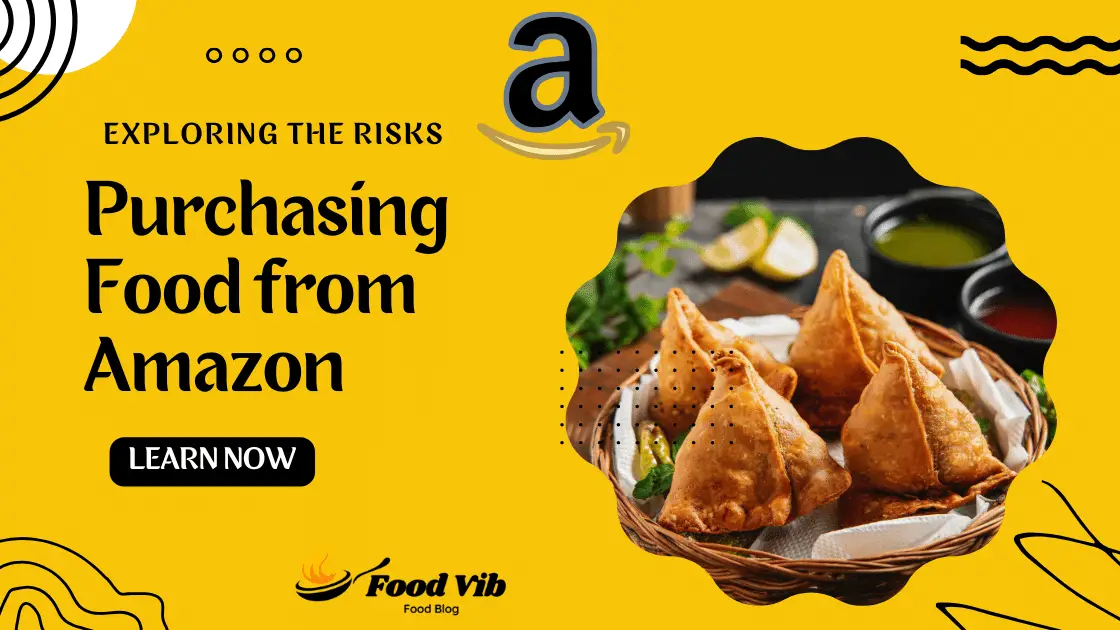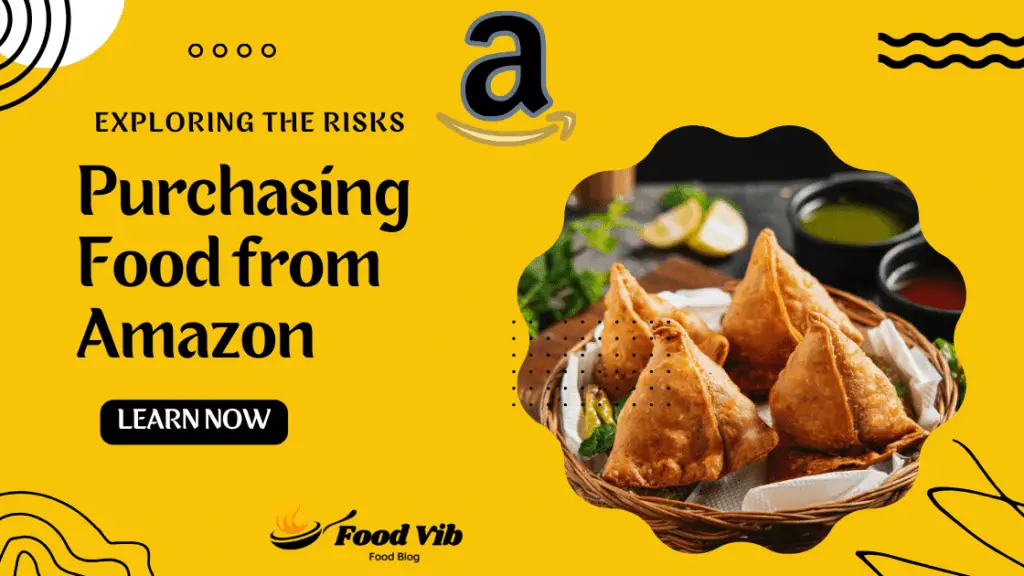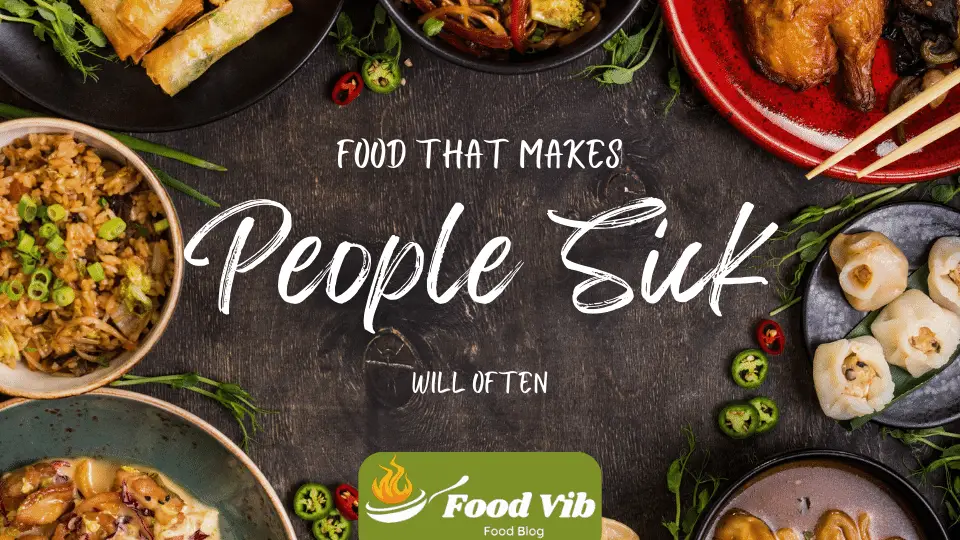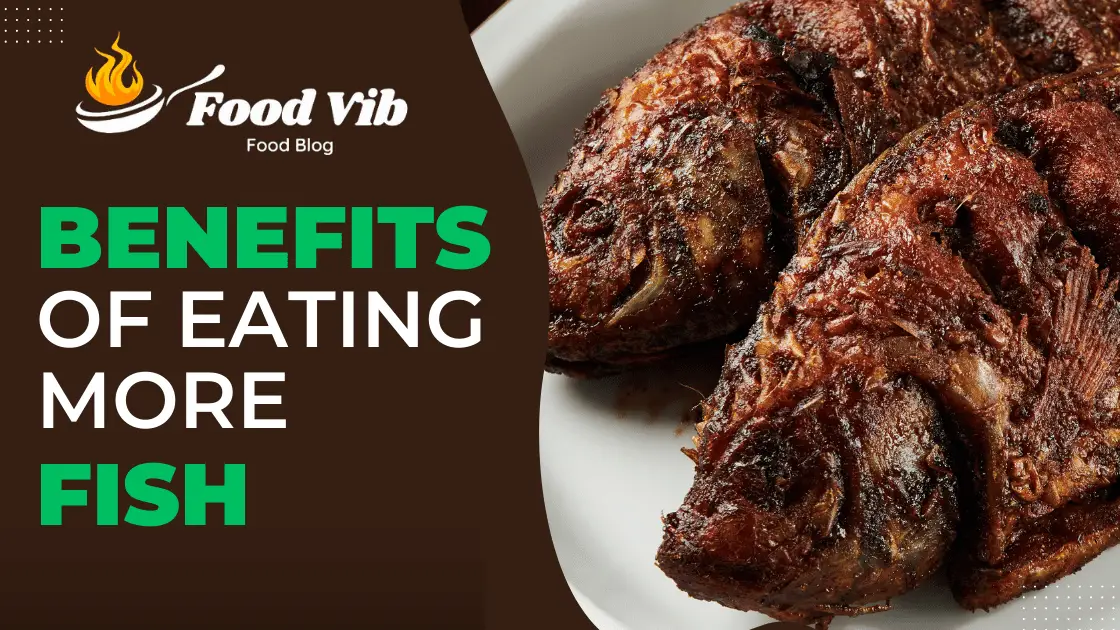Exploring the Risks of Purchasing Food from Amazon Learn Now

Although ordering food from Amazon could seem like a quick alternative, there might be hazards associated that should be considered. Although Amazon has a large selection of food goods, questions have been raised about their quality and safety. Food deterioration and contamination are heightened risks associated with long-term shipping and storage. Furthermore, it might be difficult to confirm the food’s handling and provenance due to the presence of third-party merchants on the site. Before purchasing on Amazon, be sure to thoroughly examine customer feedback and vendor information to guarantee the freshness and safety of the food being purchased.

Risks of Purchasing Food from Amazon
Buying food on Amazon has become a popular practice that many find enticing in this age of convenience and internet shopping. But there are a number of dangers that lurk behind the easy clicking and buying procedure, which customers may not be completely aware of. As seasoned industry professionals, we explore the nuances of purchasing food from this massive online retailer in this piece, highlighting the possible risks involved with this apparently easy activity.
The Temptation of Convenience: A Closer Look at Amazon’s Grocery Section
Amazon, the global juggernaut of e-commerce, has successfully diversified its offerings, extending its reach into the realm of groceries. The allure of ordering fresh produce, pantry staples, and gourmet delights from the comfort of one’s home is undoubtedly enticing. Yet, the convenience that Amazon promises may come at a cost – a cost that goes beyond the digits on your checkout screen.
Must Read: The Devastating Impact of Scottish Food
Quality Control Quandary: Can You Trust What’s in Your Cart?
a.The Challenge of Ensuring Freshness
Freshness is crucial when it comes to groceries. However, this essential component faces a difficult dynamic due to the very nature of internet commerce. How can one be sure that the tomatoes chosen for their order have the right consistency in ripeness? A quality control conundrum arises when perishables are chosen without physical presence.
b.The Mystery Behind Expiry Dates
The first thing you should do to avoid eating rotten or outdated food is to check the expiration dates. However, the packers and pickers at Amazon’s distribution facilities are responsible for verifying these dates when you place an online grocery purchase. Can we fully rely on this approach, or does the lack of human oversight make it more likely that expired dates will be missed and fall in the gaps?
From Farm to Fulfillment Center: The Journey of Your Food
a.Transparency in Sourcing: A Gray Area
The lack of source transparency is one of the main issues with purchasing food from Amazon. When you buy vegetables from a local grocery shop, the provenance of the product is often readily apparent. Nevertheless, because of Amazon’s extensive network, the path from farm to fulfillment center becomes unclear, casting doubt on the veracity of claims made about organic, locally sourced, or ethically manufactured items.
b.The Environmental Toll of Expedited Delivery
The quick delivery that Amazon Prime promises is a two-edged sword. It is indeed handy to get your goods within hours of making an order, but there is an environmental cost associated with fast delivery. Rapid delivery’s carbon footprint makes the ecological effects of this convenience-driven strategy questionable.
Beyond the Cart: Unseen Challenges of Online Grocery Shopping
a.Packaging Predicaments
Online sellers sometimes spend a lot of money on packing to guarantee that your goods arrive undamaged. However, this focus on safety unintentionally adds to the growing problem of unnecessary packaging waste. As customers, do we unintentionally encourage a sector of the economy that puts the beauty of our products above the health of the earth?
b.Security Concerns: Is Your Data on the Menu?
Despite becoming widespread, online transactions are not immune to security failures. Are you sure that your data is safe enough when you submit your credit card number and personal information on Amazon? The protection of your information in the broad digital realm is a legitimate issue, given the susceptibility of online platforms to cyber assaults.
The Verdict: Balancing Convenience and Conscious Consumption
Although there’s no denying the ease of getting groceries with just one click, it’s important to consider the hazards as well. There is a need for a more critical attitude to online food shopping due to issues with freshness, source transparency, environmental effect, packaging waste, and security.
Is Buying Food from Amazon Safe?
It’s become usual to purchase meals from Amazon in this era of internet ease. It is important to investigate the possible risks that may be concealed by this apparently practical approach. To put it simply, let’s examine the potential dangers of buying food on Amazon.
1. Quality Control Quandaries
a. Ensuring Freshness
Online grocery shopping presents a challenge: how can you be certain that the produce and fruits you purchase are as fresh as you desire? Concerns with preserving the quality of perishable goods are raised by the absence of human selection.
b. Decoding Expiry Dates
Can you really believe that the goods in your basket won’t expire shortly after they arrive if you can’t physically verify the expiration dates yourself? Uncertainty is increased by depending on the employees at Amazon’s distribution centers to pay attention to every detail.
2. From Farm to Your Doorstep: The Journey of Your Food
a. Transparency in Sourcing
It may be difficult to determine the sources of your produce because to Amazon’s extensive network, unlike local grocery shops where you could know where your food originates from. The assertions made about the origin of your goods seem phony because of the lack of openness.
b. Environmental Impact of Swift Deliveries
Although quick delivery is practical, one must overlook the environmental cost. Amazon Prime promises quicker delivery, but this convenience may come with a higher carbon footprint, raising questions about the environmental effects of this choice.
3. Beyond Your Cart: Unseen Challenges
a. Packaging Predicaments
Online businesses often utilize substantial packing to guarantee that things arrive intact. However, this emphasis on safety exacerbates the problem of excessive packing waste. As customers, are we unintentionally aiding a sector of the economy that puts aesthetics ahead of environmental responsibility?
b. Security Concerns
Entering personal information on Amazon during an online purchase raises concerns about data security. There is further reason to be concerned about the security of your information given the possibility of online platforms becoming targets of cyberattacks.
Balancing Convenience and Caution
Even if it’s convenient to get food online, there are certain risks to consider. Freshness issues, transparent sources, packaging waste, environmental effects, and security issues highlight the necessity for a cautious and knowledgeable approach while purchasing food on Amazon.
Top 5 Safety Measures Before Ordering Food on Amazon

It has become commonplace to order meals on Amazon in this age of digital ease. But it’s crucial to make sure you have a safe and secure online grocery buying experience. The top five safety precautions to think about before clicking “Order Now” are listed below.
1. Check Seller Ratings and Reviews
Look through the seller’s ratings and customer reviews before adding anything to your basket. This offers insightful information about the seller’s dependability and the quality of the goods they sell. Select vendors that have received excellent feedback and high ratings in order to increase the chances of making a happy transaction.
2. Verify Product Details and Descriptions
Examine the seller’s product descriptions and details with great care. Verify that the data satisfies your requirements and expectations. Make sure the shelf life of the products you want to buy is something you’re comfortable with by paying close attention to the expiry dates.
3. Opt for Prime Pantry for Eco-Friendly Packaging
If you value the environment, you may want to use Amazon Prime Pantry. This service minimizes the negative effects of excessive packaging waste on the environment by often using eco-friendly packaging techniques. By selecting Prime Pantry, you help to promote an online purchasing strategy that is more environmentally friendly.
4. Secure Your Payment Information
Make sure the connection to the website is safe before entering your payment information. Check for a padlock symbol in the address bar and “https://” in the URL. This denotes an encrypted, secure connection, reducing the possibility that your credit card information may end up in the wrong hands. For more security, think about using credit cards or other secure payment options.
5. Set Up Two-Factor Authentication
Adding two-factor authentication to your Amazon account will strengthen its security. By requiring a verification code in addition to your password, this provides an additional degree of security. Enabling this function gives you peace of mind while making purchases online by protecting your account from unwanted access.
Conclusion: Ensuring a Safe and Satisfactory Online Shopping Experience
In conclusion, even though purchasing food from Amazon is unquestionably convenient, being proactive with safety precautions is crucial. Choosing eco-friendly packaging, confirming product specifications, safeguarding payment information, activating two-factor authentication, and examining seller ratings are all important measures to guarantee a safe and fulfilling online grocery shopping experience. You will be able to confidently explore the internet marketplace if you include these precautions in your daily practice.
Must Read: The Impact of Spicy Food On My Health Learn Now
FAQ (Frequently Asked Question)
How does Chinese culinary tradition incorporate seasonal ingredients into its dishes throughout the year?
In Chinese cooking, using seasonal and fresh ingredients is highly valued. For instance, summer cuisines use cooling ingredients like cucumber, while spring dishes often feature fragile greens and sprouts. Harvest veggies are in season in autumn and provide for heartier winter recipes made with root vegetables and other components.
Are there any specific festivals or events in Chinese culture that are associated with certain seasonal foods?
Yes, various Chinese holidays are connected to certain seasonal delicacies. For instance, mooncakes are served during the Mid-Autumn Festival, while zongzi, or sticky rice dumplings, are served during the Dragon Boat Festival. These conventions emphasize how important seasonal foods are to Chinese cooking practices.
How does the use of traditional Chinese cooking techniques contribute to the distinct flavors of seasonal dishes?
To bring out the tastes of seasonal foods, traditional Chinese cooking methods like stir-frying, steaming, and braising are modified. Steaming keeps seafood fresh throughout the summer, stir-frying keeps spring veggies crisp, and slow braising enhances the taste of heavy winter stews.
In what ways do Chinese restaurants outside of China adapt their menus to cater to the availability of seasonal ingredients in different regions?
In response, Chinese eateries outside of China often modify their menus to take advantage of local seasonal delicacies. To preserve the authenticity of Chinese cuisines, they could use locally grown fruit and add in seasonally appropriate components that appeal to the local population
How do Chinese culinary experts balance traditional recipes with modern dietary preferences in creating seasonal dishes?
Chinese chefs strive to combine traditional flavors with those of the contemporary diet by using healthier cooking methods, cutting down on oil and salt, and experimenting with vegetarian and vegan choices for special occasion meals. This strategy maintains the authenticity of classic tastes while satisfying the needs of modern, health-conscious customers.
Are there any regional variations in the preparation of seasonal dishes within China?
Yes, there are regional differences in the way seasonal foods are prepared due to China's large size and variety of weather. For instance, summer cuisine in coastal areas may feature seafood, but winter cuisine in northern regions may concentrate substantial soups and dumplings.
How do Chinese chefs use symbolism in seasonal dishes, and can you provide examples?
In accordance with traditional values, Chinese cooks often use symbolism in seasonal cuisine. For example, a Chinese New Year dinner with fish denotes richness and plenty, while delicacies like oranges and tangerines signify wealth and good fortune.
What are some traditional Chinese desserts associated with specific seasons, and what ingredients are commonly used?
Seasonal variations exist in traditional Chinese sweets. Red bean paste-filled sweet rice dumplings are a classic springtime treat. Mooncakes are served in the fall, whereas shaved ice with fresh fruit is a common summertime treat. Warm soup cooked with sweet rice balls is a wintertime favorite.
Is it safe to buy Chinese cooking ingredients from online platforms like Amazon?
While Amazon provides a handy way to buy materials for Chinese cuisine, it's important to verify product quality and authenticity by looking at product ratings, seller reputations, and product origins. Verify that the vendor adheres to the correct food safety regulations.





